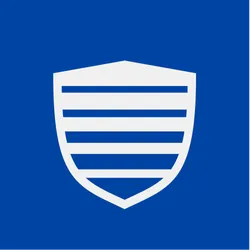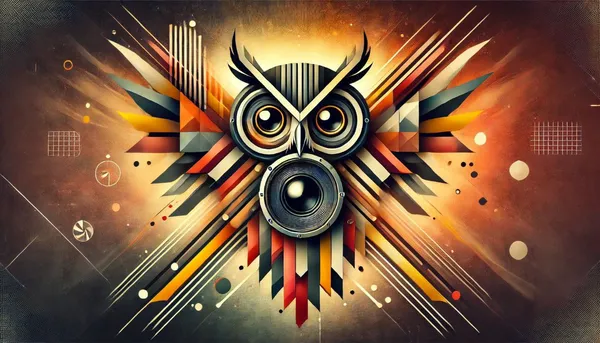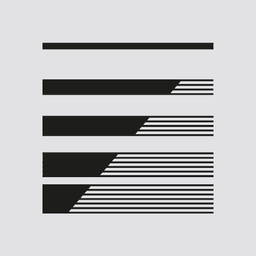The Gnosis, Nethermind, and Shutter teams are thrilled to announce that encrypted transactions are live on the Gnosis Chain, marking the first mainnet implementation of Shutter's threshold encryption for transactions.
It's the second major Shutter use case to go live after Shielded Voting for Snapshot. This beta launch brings an encrypted mempool to the Gnosis Chain, protecting users from malicious Maximal Extractable Value (MEV) attacks and enhancing the security and neutrality of blockchain transactions.
Experience an encrypted mempool now on the Shutterized Gnosis Chain
The Shutterized Gnosis Chain beta launch is live. As a user, you can add an RPC to your wallet to use encrypted transactions on the Gnosis Chain.
Please note that this initial release should be considered a beta release with some caveats and risks. Use at your own risk! While it is a full mainnet implementation, there will initially be a relatively small number of participating validators and Keypers, leading to longer transaction inclusion times. However, we anticipate that more validators will soon use the updated clients, and the Keyper set will grow. This is expected to decrease transaction inclusion time and enhance the overall security and stability of the system. More details on this will be provided later in the post.
Public Blockchains are Built for Censorship Resistance and Leveling the Playing Field
The Purpose of Public Blockchains
Public blockchains facilitate censorship-resistant transactions and create a fair trading environment. They significantly advance our understanding of digital interactions, trust, and governance. These networks aim to establish decentralized systems where transactions and data are transparent, secure, and free from centralized control. We must uphold these core principles as we develop public blockchains to promote a decentralized and inclusive digital future.
However, centralization and information asymmetry hinder today's transaction supply chain, which is widely considered to be broken, opaque, and hindered by centralization and information asymmetry. Centralized control points undermine the decentralized nature of public blockchains, creating opportunities for manipulation and censorship.
Shutter aims to tackle these challenges by improving the resistance to censorship and the fairness of public blockchains. It uses threshold encryption to safeguard the ordering of transactions and prevent exploitation of MEV. This method secures the blockchain environment, ensuring transactions are processed fairly and transparently.
Understanding Base-Layer Neutrality
Base-layer neutrality is a fundamental principle ensuring that the core layer of the blockchain operates without bias or favoritism. This means all transactions are processed and validated equally, regardless of origin, destination, or nature.
This neutrality is crucial for several reasons:
- Fairness: It ensures that all users are treated equally, thus maintaining trust in the blockchain.
- Censorship Resistance: The blockchain maintains its integrity by resisting censorship and transaction manipulation.
- Decentralized Governance: Ensuring that no single entity can gain an unfair advantage supports the long-term sustainability and decentralization of the network.
The Role of Encryption in Combating Censorship
Encryption enhances the credibility of the blockchain by ensuring data and transaction integrity. Encrypted data is inherently resistant to censorship because intermediaries or authorities cannot easily decipher the content and context of the communications. This capability allows users to interact freely on the blockchain without fear of interference.
Shutter leverages advanced cryptographic techniques to secure the ordering of transactions, minimizing the risks associated with MEV and other potential exploits, thus strengthening the overall security of the blockchain ecosystem.
Introduction to Shutterized Gnosis Chain
Launching the Shutterized Gnosis Chain will enhance the base layer neutrality of this community-owned network, operated by a diverse group of over 200,000 validators worldwide. This launch represents a significant milestone after a journey of development. Let's examine its importance and provide an overview of its functionality.
How We Got Here
The journey to the Shutterized Gnosis Chain began with a vision to enhance transaction privacy and security on public blockchains. The Gnosis Chain aimed to tackle crucial issues related to malicious MEV attacks by utilizing Shutter, a threshold encryption mechanism.
The development process involved extensive collaboration between Shutter, Gnosis, and the Nethermind teams. A testnet was launched to test the integration of Shutter's encryption with the Gnosis Chain. These test phases were crucial for identifying and resolving technical challenges, ensuring a robust and secure mainnet launch.
The Gnosis Chain community plays a crucial role in this journey, with participation from validators, developers, and users. Their feedback and contributions are instrumental in refining the protocol, ultimately leading to successfully deploying the integration on the Gnosis Chain mainnet.
Why Is It a Big Deal?
The Shutterized Gnosis Chain is a big step forward in blockchain technology. It addresses some of the ecosystem's most urgent issues.
- Front-running and malicious MEV protection: The Shutter protocol uses threshold encryption to mitigate MEV and protect transactions from front running, strengthening the overall blockchain security and fostering user trust.
- Censorship Resistance: The transactions are broadcast to the network encrypted, and validators include them in a block before decryption. This process prevents any single validator from censoring or manipulating the transaction order, ensuring fair and unbiased transaction processing.
- Decentralization: The decentralized nature of the Shutter via Keypers ensures that no single entity controls transaction ordering. This supports the network's long-term sustainability and neutrality.
How It Works
Shutter integrates with the Gnosis Chain using Keyper nodes and threshold encryption to manage encryption and decryption keys securely. Keyper nodes use a Distributed Key Generation (DKG) protocol to ensure decentralization. Encrypted transactions are submitted to a sequencer contract, which maintains the order of transactions and schedules them for inclusion in future blocks.
Validators on the Gnosis Chain commit to processing these encrypted transactions correctly, maintaining transaction integrity, and protecting against front running and other MEV attacks. This integration ensures that transactions remain secure and free from manipulation until they are included in a block. For a more in-depth explanation, please see the Shutterized Gnosis Chain Debuts in July! post.
Encrypted Mempool
The mempool, short for memory pool, is the place where transactions wait to be processed and added to a block by validators. Usually, mempools are publicly accessible, allowing anyone to view pending transactions. However, in an encrypted mempool, these transactions are encrypted, so their details are not accessible to the public until they are added to a block.
The Shutterized encrypted mempool goes beyond traditional encryption by using threshold encryption. This method needs a minimum number of Keypers to work together to decrypt the transaction data. This decentralized approach guarantees that no single centralized party can decrypt the transactions prematurely and gain an advantage.
Malicious MEV refers to the potential profit that validators and searchers can gain by reordering, adding, or excluding transactions. Encrypted mempools prevent these entities from seeing the transactions before they are finalized, reducing the risks of malicious MEV actions such as front running or sandwich attacks.
First Phase of a Progressive Integration
The initial phase of the Shutterized Gnosis Chain launch is essential to creating a more secure and resilient blockchain environment. Although this phase has limitations and challenges, the gradual integration approach ensures that these can be effectively managed and mitigated.
As the network expands with more validators, Keypers, and RPC provider support, the setup will become faster, more secure, and more decentralized, paving the way for a robust and resilient blockchain ecosystem.
What the First Phase Entails
The Shutterized Gnosis Chain's initial launch introduces several vital features, albeit with some limitations, to ensure a stable and secure rollout.
Longer Inclusion Time for Encrypted Transactions
During this initial phase, the network's capability to process encrypted transactions is limited. Due to a lower number of participating validators, encrypted transactions take longer to be included in a block. However, this is a temporary limitation. More validators are expected to join soon, which will enhance the network's speed and reliability.
Smaller Keyper Set
The initial Keyper set, responsible for managing the threshold encryption, will consist of only 7 Keypers. This smaller set provides a foundational level of security. The plan is to expand this number in future phases. Increasing the number of Keypers will enhance security and further decentralize the network, making it more resilient.
Thanks to individuals and larger entities like Jacob Czepluch, Blockscape and Kleros, all seven Keypers are now live and the set will gradually grow.
If you are interested in becoming a Keyper, let the Shutter DAO 0x36 know!
RPC Provider Trust Assumption and RPC Adoption
Upon launch, a specific RPC endpoint will be available for encrypted transactions. This creates a trust assumption regarding the RPC provider, which may not be ideal but is a necessary first step. In the medium term, dapps and wallets should incorporate the encryption process to guarantee "end-to-end" encryption.
Although this ensures support for encrypted transactions, RPC providers need to implement this feature for broader use. The goal is to have all major RPC providers encrypt transactions by default, and this will be achieved through continued integration efforts in the upcoming phases.
General Risks and instability
In the beginning, there are certain risks and potential instabilities. Sometimes, transactions may be lost because there are only a limited number of validators and Keypers. Also, relying on a specific RPC endpoint creates a trust assumption that could be a single point of failure. As the network grows and more validators and Keypers are added, these risks are expected to decrease.
Also, at the moment, there are no significant consequences for misbehaving validators such as slashing, but these will be implemented in a later phase of the integration.
Why Progressive Integration?
Progressive integration is an approach that enables the gradual rollout of new features. It allows for identifying and promptly resolving potential issues, minimizing risks associated with large-scale changes. This method also provides an opportunity to gather feedback and make iterative improvements. By gradually introducing more validators, Keypers, and RPC provider support, the Shutterized Gnosis Chain can achieve optimal functionality without compromising security or stability.
In the future, we anticipate even more promising developments. As more validators start using the Shutterized clients and the keyper set grows, we expect significant improvements in transaction speed and overall system stability. These enhancements will reduce the time taken for transactions to be included and strengthen the network's security and resilience. With each phase, Shutterized Gnosis Chain is poised to become faster, more secure, and more efficient, demonstrating our dedication to creating a decentralized, censorship-resistant blockchain ecosystem that benefits everyone.
Technical & Deployment Details
As mentioned previously, we are starting with a smaller group of validators and would like to give special thanks to the Gateway FM team for their support in launching with a significant number of validators that will accept encrypted transactions.
In the beginning, validators will have the option to participate as the Nethermind client is still in the early beta phase and is under active development. This version is not recommended for use by most validators at this point, but interested validators should choose to participate at a later stage. Additionally, in the future, the plan is for the integration to transition towards a protocol-level change where there will no longer be an opt-in option.
Shutterized Gnosis Chain at the Gnosis Docs
https://docs.gnosischain.com/shutterized-gc/
For full specifications, see https://github.com/gnosischain/specs.
To learn more about the validator registration process, see https://github.com/NethermindEth/shutter-validator-registration.
The Shutter Keyper deployment details can be found at https://github.com/shutter-network/shutter-keyper-deployment/tree/gnosis/main?tab=readme-ov-file#contract-deployments.
The RPC endpoint for the Shutterized Gnosis Chain is https://erpc.gnosis.shutter.network and you can try the demo dapp at https://gnosis-shutter.web.app/.
Manually Adding the RPC to a Wallet
Enter the following details, and you will be good to go!
Network name
Shutterized Gnosis Chain
New RPC URL
https://erpc.gnosis.shutter.network
Chain ID
100
Currency symbol
XDAI
Block explorer URL (Optional)
https://www.gnosisscan.io
Conclusion
Incorporating Shutter's advanced threshold encryption technology, Gnosis Chain significantly reduces the risk of MEV attacks and transaction front running. This innovation ensures users can engage in secure and confidential trading on the Gnosis Chain.
In the future, the Shutterized Gnosis Chain will undergo progressive advancements. Subsequent phases will introduce more validators and Keypers, increasing transaction speed and network security. Furthermore, the scope of Shutter technology will expand through more chain integrations, thus broadening its impact across the blockchain ecosystem.
Those interested in the benefits of secure trading are encouraged to add the RPC endpoint to their wallet. This simple step will enable you to transact with an added layer of protection provided by Shutterized technology.
Give encrypted transactions a try! CoW Swap, Swapr, and Curve are great places to experience shielded trading on the Gnosis Chain.
It's essential to understand malicious MEV's dangers and how Shutter addresses these issues to create a fairer trading environment. This knowledge will prepare you for a more secure trading experience. If you are new to this topic, consider reading our What The Heck is Maximal Extractable Value (MEV)? post to learn more.
Stay updated with the latest developments on the Gnosis Chain and other Shutter integrations. Follow our progress as we create and implement innovative solutions to improve privacy and security in the blockchain industry. Join us on our journey toward a more secure and decentralized future.
FAQ
- What is the Encrypted Mempool on the Gnosis Chain?
The encrypted mempool is an optional feature on the Gnosis Chain that enhances front running protection and reinforces anti-censorship guarantees.
- Who are the key players in this protocol?
The key players include:
- Gnosis Chain validators/block producers.
- A sequencer contract.
- Keyper nodes.
- A new encrypting RPC endpoint.
- What are the benefits for users?
Users can expect safer trading, added (real-time) censorship resistance, and more profitable trading due to reduced malicious MEV.
- What are the trade-offs for implementing an encrypted mempool this way?
There's a small increased cost for users, which is expected to be offset by better prices due to less front running. The Distributed Key Generation adds latency but can most likely be parallelized, so the trade-off shouldn't be significant.
- How deeply integrated is Shutter on Gnosis Chain today?
Currently, Shutter is an opt-in feature which Gnosis Chain validators can opt-in by running a special build of the Nethermind client.
- What if registered validators choose not to include Shutterized transactions?
This would mean they technically aren’t adhering to the protocol which can be considered a violation and will be visible by observers of the chain. However, there are currently no automatic consequences for this violation. In the future, it’s planned a) for Keypers to not generate keys for misbehaving validators b) introduce slashing to penalize this misbehavior.
- How many validators are currently running the Shutterized version of Nethermind?
About 8,000 validators or about 4% of all the Gnosis Chain validators.
- How do I as a validator opt-in to accepting encrypted transactions?
You have to register in the validator registry contract and run a specific version of Nethermind as your execution client. Please follow the steps here.
- Who are the Keypers currently?
Keypers are hand-selected by Shutter DAO 0x36, see: https://blog.shutter.network/become-a-keyper-for-shutter-network/
There are 21 approved Keypers in total. Currently a subset of 7 is operating for this initial beta release.
- What’s the Keyper threshold?
The threshold is the number of Keypers required to collaborate in order to produce the decryption keys. Currently it is 4 out of 7. The higher the threshold, the more secure the protocol, but also the stronger the liveness requirements on the Keypers.
- How do I become a Keyper?
See here how to apply to Shutter DAO 0x36 to become a Keyper:

- What are the main contracts involved in the protocol?
- The Sequencer that accepts and orders encrypted transactions.
- The Keyper set Manager that defines the set of Keypers and the rules according to which it can be changed.
- The Key Broadcast Contract on which the Keypers publish the eon key to the users.
- The Validator Registry where validators register if they want to join or deregister if they want to leave the protocol.





![Shutter Network at EthCC[7]](/content/images/size/w250/2024/07/shutter_at_ethcc_7.jpg)



